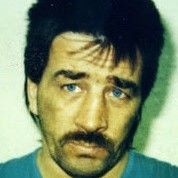
Serge Quesnel
Summary
Name:
Years Active:
1993 - 1995Status:
ReleasedClass:
MurdererVictims:
5Method:
Shooting / Stabbing / Throat-cutting / Bludgeoning / BurningNationality:
Canada
Serge Quesnel
Summary: Murderer
Name:
Serge QuesnelStatus:
ReleasedVictims:
5Method:
Shooting / Stabbing / Throat-cutting / Bludgeoning / BurningNationality:
CanadaYears Active:
1993 - 1995Date Convicted:
July 19, 1995bio
Serge Quesnel was born in 1970 in Trois-Rivières, Quebec. He dropped out of high school early and only held one legitimate job in his life — working at a fast food restaurant for just two weeks. His criminal path began during his teenage years, starting with professional shoplifting, and soon evolving into more serious crimes like armed robbery and drug trafficking. Known for his physical strength and intimidating presence, Quesnel became an enforcer and debt collector for local drug dealers. His most distinguishing features were two teardrop tattoos beneath each eye, often interpreted as a grim symbol of violence.
In 1989, Quesnel was convicted of theft and sentenced to two years in prison. He insisted on serving his time in a federal prison rather than a provincial one, believing it would grant him better access to criminal contacts. He was placed in Donnacona Institution, near Quebec City, where he built strong ties with seasoned criminals and solidified his ambitions of climbing the criminal ladder. Fueled by the desire to earn respect in the underworld, Quesnel decided that committing murder would boost his reputation.
murder story
On September 9, 1993, Quesnel committed his first known murder alongside associate Eric “Nose” Fournier. Their victim, a drug dealer named Richard Jobin, was targeted to enhance Quesnel’s underworld credibility. A little over a month later, on October 20, 1993, Quesnel and Fournier killed Martin Naud, a mechanic and part-time drug dealer who Quesnel believed knew too much about Jobin’s murder. The pair broke into Naud’s home, where Quesnel brutally stabbed him in the eye and slit his throat, while Fournier strangled him with a shoelace. They then set the body on fire.
In late 1993, Quesnel was incarcerated again for a drug offense. While at Donnacona, he acted as an enforcer for wealthier inmates. His reputation led to a key introduction to the Hells Angels through his lawyer. After his release in November 1994, he met with Louis “Mélou” Roy, president of the Trois-Rivières chapter of the Hells Angels. Roy offered him a job as a contract killer with a weekly base salary and bonuses of $10,000 to $25,000 per hit. Quesnel accepted, quickly rising as Roy’s protégé.
On January 30, 1995, Quesnel assassinated Jacques Ferland, a chemist who manufactured PCP for the rival Rock Machine gang. Gaining access to Ferland’s home via an acquaintance, he shot him in the head. Just days later, on February 3, 1995, Quesnel executed Claude Rivard in a car at a red light in Montreal. Though police witnessed the murder and chased him, Quesnel managed to escape on foot.
His third contract killing was on March 23, 1995. He lured Richard “Chico” Delcourt, an independent drug dealer, with the promise of a party. Midway to Quebec City, Quesnel pulled off into a rural area and shot Delcourt in the head with a .357 Magnum.
He was then assigned to kill Gilles Lambert, a Rock Machine leader, with a promised reward of $50,000. Before he could complete the hit, one of his accomplices, Michel Caron, turned informant and implicated Quesnel in the Ferland murder. On April 1, 1995, Quesnel was arrested.
Rather than face a potential life sentence, Quesnel turned Crown’s evidence, agreeing to testify against several Hells Angels in exchange for a reduced sentence. His deal included a 20-year sentence with parole eligibility after 12 years and a $350,000 payment from the Crown, along with a new identity post-release. He was also allowed to keep $10,000 in stolen jewelry and was reportedly worth $1 million in investments by 1999.
While in jail, Quesnel was kept in isolation for his safety, but the conditions were anything but ordinary. He was frequently visited by his girlfriend Sandra Beaulieu, a 21-year-old stripper, who was allowed intimate access, including bringing him drugs. The scandal exploded when Beaulieu’s risqué photos and an affidavit exposing Quesnel’s drug use inside the jail were leaked. Though he violated his agreement, the Crown honored the original plea deal.
Quesnel testified at the 1997 murder trial of Roy but was found unreliable by the jury, resulting in Roy’s acquittal. In general, Quesnel’s testimony led to multiple arrests but no successful convictions. He also provided information on the car bombing of Lee Carter in 1993, allegedly orchestrated by Hells Angel Richard Vallée.
In 2003, Quesnel published a memoir co-written with journalist Pierre Martineau. He later sued the government over harsh prison conditions and won his case in 2009. He was granted day parole in 2011 but had it revoked in 2013 for alcohol use. On November 24, 2015, Serge Quesnel was released on full parole.